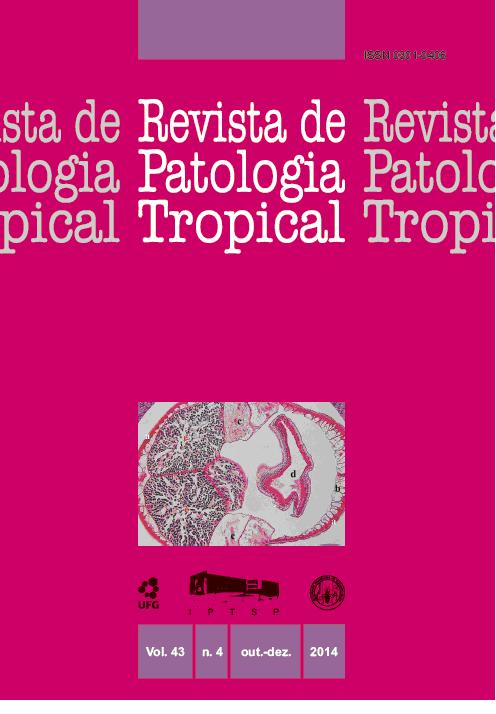PREVALENCE OF A ZOONOTIC PARASITE, Dioctophyma renale (GOEZE, 1782), AMONG MALE CANINES IN A WILD RIVERSIDE AREA OF LA PLATA RIVER, PROVINCE OF BUENOS AIRES, REPUBLIC OF ARGENTINA
DOI:
https://doi.org/10.5216/rpt.v43i4.33603Keywords:
Prevalence, Dioctophyma renale, zoonosis.Abstract
Dioctophymosis is an helminthiasis with an indirect life cycle caused by Dioctophyma renale. It mayaffect both humans and other mammals. The purpose of this study was to determine the prevalenceof the parasite in male canines of different ages, living in a wild riverside area of La Plata Riverwith favourable characteristics for the development of eggs, intermediate or paratenic hosts andcompletionof the life cycle of D. renale. 171 animals were surveyed and samples were collectedthrough urethral catheterization. The samples were processed by means of centrifugation at a relativecentrifugal force of 700 g and microscopic observation of sediments. 42.1% of canines exhibitedpatent Dioctophymosis in their kidneys. Male canines between the ages of 2 and 5 showed thehighest frequency of positive results. Several epidemiological risk factors are discussed that, whenassociated, might favour the high prevalence of this parasite in the area. The need for equipmentfor the indirect diagnosis of the disease in canines and other animals prone to infection is clearlydemonstrated.Downloads
Downloads
Published
How to Cite
Issue
Section
License
The manuscript submission must be accompanied by a letter signed by all authors stating the full name and email address, confirming that the material has not been published or is under consideration for publication elsewhere, and agreeing to transfer copyright in all media and formats for Journal of Tropical Pathology. The authors will not be paid for published articles. They are solely responsible for the content of those articles, even if the Editor holds the right to adjust them to the norms of the journal.
The reviewers will not be paid for the peer review process.

